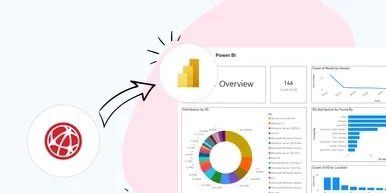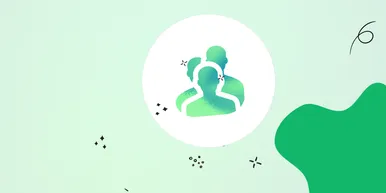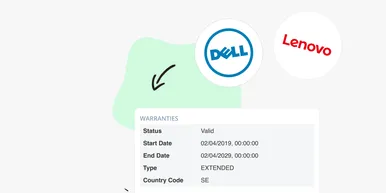
Introducing PowerShell: Custom inventory of Registry Keys
Learn how vScope's PowerShell integration lets you collect custom registry keys, control access with Just Enough Administration, and build more flexible IT inventories.
With PowerShell, you can now enjoy a more flexible and customizable approach to documenting and reporting on your IT assets. In the latest update of vScope, you can create more custom reports and IT documentation by including information about Windows Registry Keys.
By using PowerShell for your Windows inventory, you also benefit from more granular permission settings, a concept known as Just Enough Administration. There’s much to explore, so let’s dive right in!
Cherry-pick registry keys
vScope’s current inventory methods—WMI (Windows Management Instrumentation) and WinRM (Windows Remote Management)—have long been the backbone of Windows OS information collection. The introduction of PowerShell complements these methods by offering a more nuanced and flexible approach.

In vScope 3.29, you can now add registry keys to the Windows PowerShell credential and let vScope collect every key nested under the specified key. These values can be turned into tags from Discovery.
What are Windows Registry Keys?
A Windows Registry Key is a fundamental concept in the Windows operating system. It stores low-level settings for both the OS and applications. The registry contains values, configurations, and instructions essential for system and software functionality.
A few examples…
Here are some use cases where collecting registry keys can be useful:
1. AutoAdminLogon for Automatic Login
Key:
HKEY_LOCAL_MACHINE\SOFTWARE\Microsoft\Windows NT\CurrentVersion\Winlogon
Purpose:
Enable automatic login for a specific user account (e.g., for kiosk mode or auto-boot systems).
2. Power Settings
Key:
HKEY_LOCAL_MACHINE\SYSTEM\Current\Control\SetControlPower
Purpose:
Control system power-saving features and sleep settings to optimize energy use.
3. Default Browser
Key:
HKEY_CLASSES_ROOT\http\shell\open\command
Purpose:
Specify the default system-wide browser by modifying the path in this registry entry.
4. AutoCAD License Server
Key:
HKEY_LOCAL_MACHINE\SOFTWARE\Autodesk\AutoCAD\Rxx.x\ACAD-xxxx:409AdLM
Purpose:
Configure the license server and licensing mode (standalone/network) for AutoCAD deployments.
5. Java Update Notifications
Key:
HKEY_LOCAL_MACHINE\SOFTWARE\JavaSoft\Java Update\Policy
Purpose:
Enable or disable update notifications for Java across the environment.
Enhanced Permission Management with Just Enough Administration (JEA)

Another major update in vScope is support for Just Enough Administration (JEA). This feature allows IT admins to define precise, role-based access control to systems.
By integrating JEA, you can delegate only the permissions necessary for vScope to gather data—nothing more. This not only improves security but also streamlines administrative workflows and compliance.
Prepared for future customizations
We’re committed to expanding the PowerShell connector. Expect further enhancements that allow even more flexibility when customizing IT asset inventories and discovery tags.
Here’s the full guide on how to get started with PowerShell, Registry Keys, and Just Enough Administration.
Need help getting started? Get in touch
Learn More
Related blog posts
All posts
New in vScope: Connect Your Asset Inventory to Power BI
vScope can now share its continuously updated IT insights directly with Power BI. Connect the asset inventory to your dashboards to create shared decision-making data for IT, finance, and leadership. This article walks through the benefits of using vScope as a Power BI data source.

Stronger Security in vScope: Support for SAML SSO and Kerberos
In the latest update of vScope, we introduce support for SAML 2.0-based Single Sign-On (SSO) and Kerberos authentication. These new features are an important step in giving you more options to strengthen the security of your IT inventory and access to your asset register. In this post, we walk through the updates and how to make the most of them.

New in vScope: Support for Intune App Assignments
With support for Intune App Assignments, you gain full control of application deployments in Microsoft Intune. vScope’s asset inventory provides instant visibility, clear reports, and alerts on changes - for stronger security, simplified compliance, and a complete overview.

Keep Track of Your Microsoft 365 User Accounts
It just got easier to stay on top of your Microsoft 365 users. With new tables and reports in vScope, you now get a ready-made overview of accounts, permissions, and licenses - without the hassle of manual data collection.

New Content for Active Directory
Stay on top of your Active Directory with new content in vScope. Get a clear overview of security, compliance, and efficiency - without manual work. In this blog post, we walk you through what’s new and how you can uncover misconfigurations in your AD.

Say Goodbye to Manual Warranty Management for Lifecycle Handling
For many IT departments, managing warranties is a time-consuming and often frustrating task. Manually tracking expiration dates, keeping tabs on various agreements, and quickly finding relevant information when needed can feel like a never-ending job. What if there was a way to automate this? With the latest update to vScope, we're introducing warranty data inventory - a new feature designed to do just that!

New vScope Content Update: Stay Up-to-Date with Enhanced IT Documentation
With our latest update, we have added more bundled content to help you excel your IT documentation standards. With more layouts and tables, you can be sure that your documentation has never been better.

Section Separators for a more customized Dashboard experience
Elevate your dashboard with new widgets for organizing content into sections! vScope's latest feature, Section Dividers, allows you to effortlessly group and categorize widgets by use case, priority, or asset type for a streamlined, intuitive view.
Tracker’s got a new look
Start off your week with a fresh new look of vScope's popular alerting tool - Tracker. Setting up cases to keep track of changes, anomalies, and common configuration errors in your IT environment is now easier (...and better looking...) than ever.